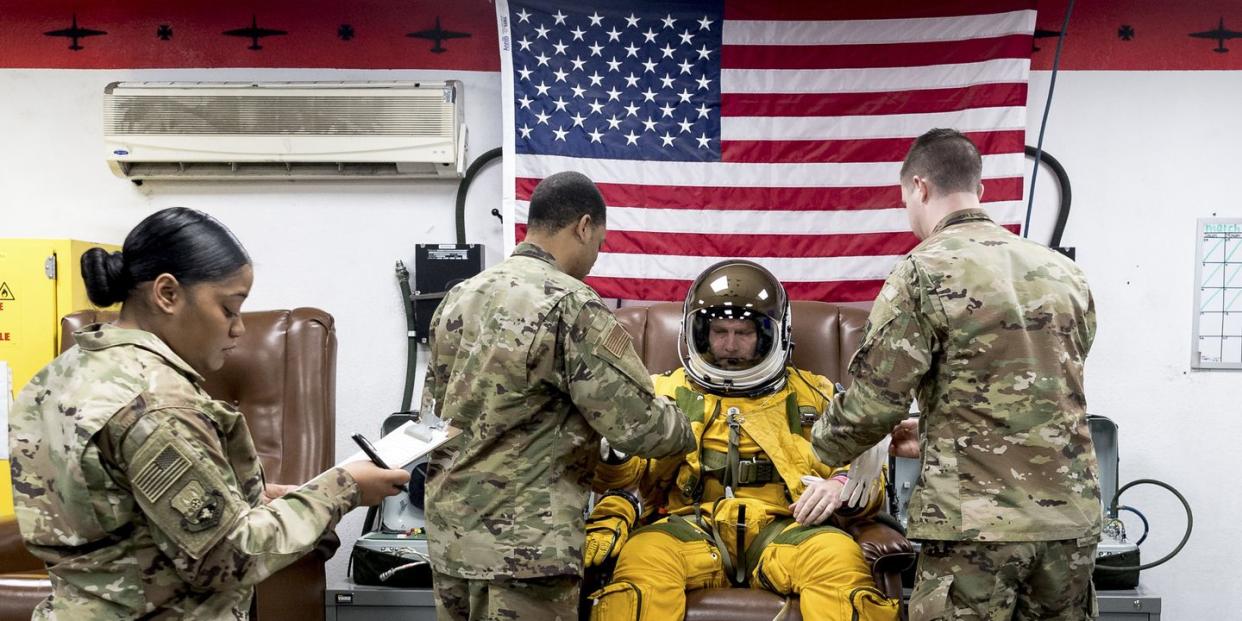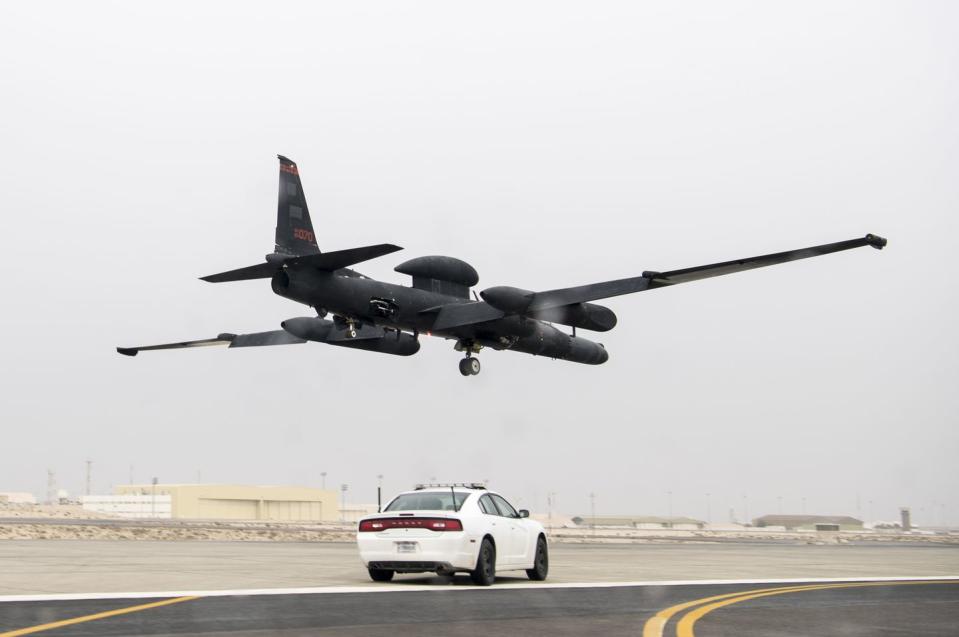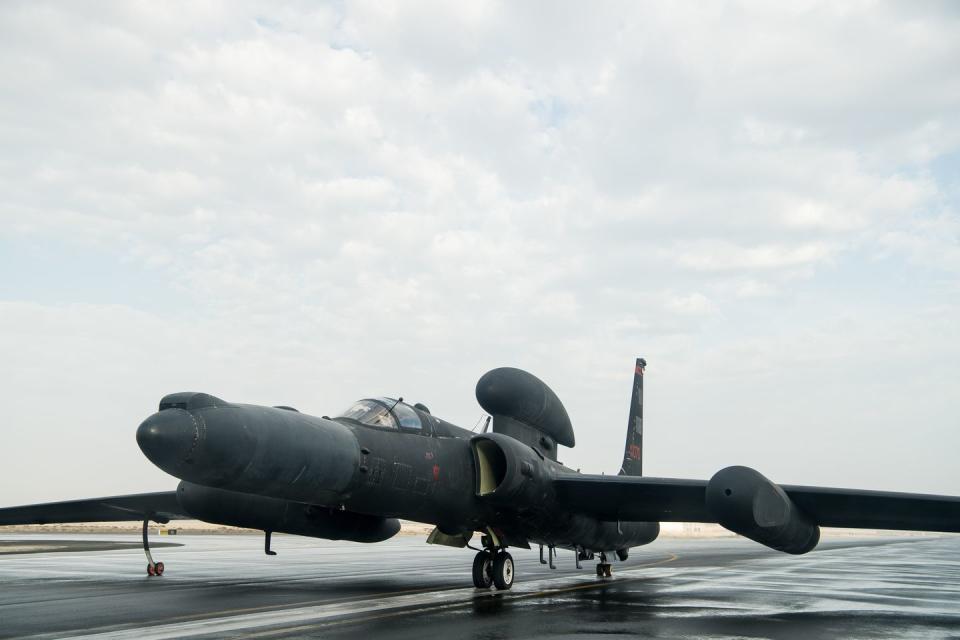Watch What It Takes for a U-2 Pilot To Put on the "Moon Suit" and Fly a Mission

You don't just hop in and fly the Dragon Lady.
A new video on YouTube chronicles the extensive preparations required to fly the U-2 "Dragon Lady" spy plane. To cope with the extreme altitudes, pilots wear “moon suits” so large and complex it takes a full crew of technicians to help them put it on. The video then goes on to show the aircraft taking off what was until recently a secret base in the Middle East, fly a mission, and then return home.
The clips shows a team of at least three technicians suiting up a pair of U-2 pilots. The technicians must help the pilots put on many of the suit accessories, particularly the gloves and a pair of metal cleats that strap onto the soles of a U-2 pilot’s boots. The suit includes a helmet with sunshade, and the team ensures the suit’s connection to an external air supply works before sending the pilot out to his aircraft. The suit looks bulky during the fitting process but the pilot seems to have quite a bit of freedom of movement as he struts to the cockpit, fist-bumping his ground crew.
The U-2 takes off, accompanied by a white chase car driven by another U-2 pilot. The pace car driver keeps an eye on the plane during takeoffs and landings, providing information to the pilot in the aircraft.
This video was shot at Al Dhafra Air Base in the United Arab Emirates, a formerly secret base that was declassified in 2017. According to a set of images taken during the filming of the video, the flight or flights were flown in support of Operation Inherent Resolve, the U.S. military operation against the Islamic State.
Shot over a period of three days, the video is a composite that appears to show at least two different flights. You can tell because two pilots suit up, one of the two pilots gets into the plane, but a third pilot is seen getting out. The second pilot during suit-up may have been a backup or flew a third mission. The Air Force personnel in the video wear arm patches from the 99th Expeditionary Reconnaissance Squadron, based at Beale Air Force Base, California.

The U-2 is one of the longest-serving aircraft in U.S. Air Force service. First flown in 1956, the aircraft filled a key role of providing high-altitude imagery of the Soviet Union and China. Flying at 70,000 feet, the black planes were thought invisible to enemy radar and air defenses as they took photographs of military bases-and nuclear weapons in particular-scattered across Eurasia. The on May 1, 1960 shoot-down of a CIA-operated U-2 operated by U.S. Air Force pilot Francis “Gary” Powers created a major international incident between the U.S. and U.S.S.R.
There are 33 U-2s in U.S. Air Force service, and the modular nature of its sensor and communications pods attached to the nose, under the wings, and above the fuselage means there is a lot of variance in their appearance. This particular U-2S has the teardrop-shaped Senior Span/Senior Spur satellite datalink pod mounted behind the cockpit. The blunted nose with protrusion on top is the ASARS-2 advanced synthetic aperture radar system.

Synthetic aperture radar (SAR) is an imaging radar that broadcasts electromagnetic waves and then collects and analyzes the returns to build two- or three-dimensional images of objects. SAR operates in a band of the electromagnetic spectrum that can pass through adverse weather, allowing the radar to image objects beneath cloud cover. SAR can also produce radar images at night, since it does not require light waves from the sun to illuminate the target. The current ASARS-2 system has a maximum resolution of about one foot.
The coupling of the ASARS-2 synthetic aperture radar and the Senior Span/Senior Spur datalink suggests that this U-2 was providing real time radar imagery of the target area to the rest of the U.S. military, from “home” back at Al Dhafra all the way to the Pentagon and beyond.
('You Might Also Like',)

